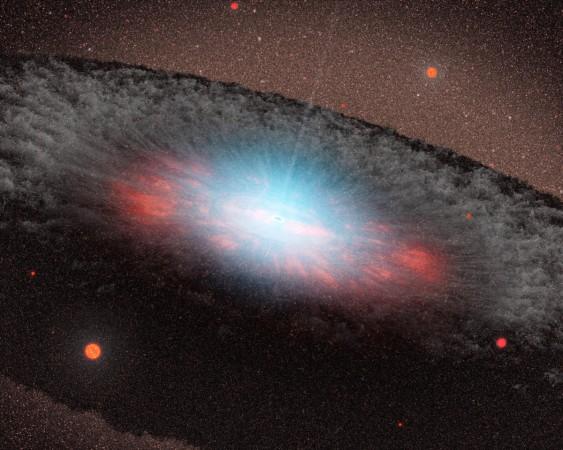
What would happen if you woke up one night and looked under your bed, only to find eyes staring back at you, lidded phantoms over a set of razor-sharp teeth?
What would you do?
EmDrive: Has the 'impossible' technology started a new space race between US and China?
At the risk of sounding overly dramatic, that's exactly how astronomer Ady Annuar, from the University of Durham's Centre for Extragalactic Astronomy, described the discovery of two supermassive black holes hiding in plain sight near the Milky Way galaxy.
"They're like monster hiding under your bed," he said.
The discovery was made by researchers from the universities of Durham and Southampton after sifting through data provided by Nasa's NuSTAR (Nuclear Spectroscopic Telescope Array) orbiting observatory.
They found two supermassive black holes at the heart of two neighbouring galaxies, NGC 1448 (38 million light years away) and IC 3639 (170 million light years away).
Researchers claim that the reason the supermassive black holes went undetected for so long was due to the mass of gas and dust that surrounded them, preventing any direct observation through telescopes — they were evenutally spotted using X-Rays.
The researchers went to great lengths to state that neither of the black holes posed any threat to Earth and humanity. They did, however, state that the proximity of these supermassive black holes to our home galaxy would make studying them and their physics far easier.
Of course, it's important to remember that there is a supermassive black hole — Sagittarius A* — at the heart of our own galaxy, a mere 26,000 light years away (the stout of heart can read all about it here).
While Sagittarius A* has never been observed, the radiation, which has been studied and analyzed from as far back as 1974, emitted from the region at the heart of the Milky Way provides solid proof that it exists.
Some scientists believe that supermassive black holes were created from the death of the very first stars, and they are often referred to as primordial black holes.
It is a widely held theory that all large galaxies have a black hole at their centre (those that don't are often dwarf galaxies). There is an exception, however, that has stumped scientists: the supergiant galaxy A2261-BCG which has no visible or measurable black hole at its core.










